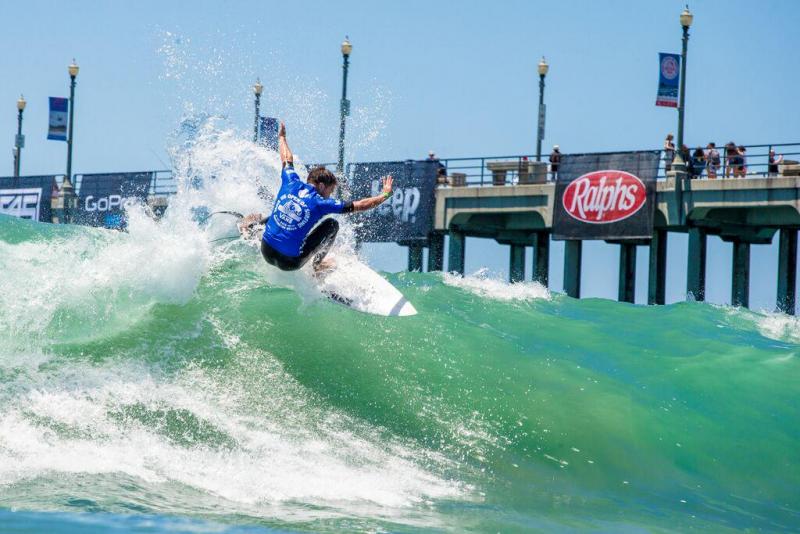Golden Wave: The U.S. Open and California’s Surf History

The Vans US Open of Surfing has once again arrived in Huntington Beach for another year of competition. From July 25 to August 2 more than half a million spectators will descend upon the beaches of Surf City USA for the prestigious nine-day event.
First held in 1959, Huntington Beach has been the home of the event for over 50 years. Until 1982, the competition was dubbed The West Coast Surfing Championship. Afterward, it came to be known simply as the Op Pro, and finally, The US Open of Surfing in 1994.
For nine days, Huntington’s shores become the epicenter of the surf world, but surfing has always been a part of California and its unique culture. Cities such as Huntington Beach, Malibu, and Santa Cruz are known for their abundance of California surf culture, largely attributed to the advent of the US Open, its prominence and popularity.
Surfing in California, can be traced back to one man: George Freeth. Freeth who is thought to be the man who created the unique California surf culture.
Freeth, who was part Hawaiian and Irish, was born in Honolulu in 1883. In Hawaii, Freeth became known and eventually credited for reviving the ancient Polynesian art of surfing while standing up.
While on vacation in Hawaii, Henry E. Huntington, owner of the Pacific Electric Railway had spotted Freeth surfing and convinced Freeth to come to Redondo Beach in 1907.
Huntington wanted Freeth to promote the Pacific Electric Railway’s new Los Angeles to Redondo Beach line and to promote it as the “The largest saltwater plunge in the world.” (Freeth’s surfboard was 200 pounds of solid wood, and 8 feet long.)
In 1912, a few years after George Freeth’s heyday, legendary surfer Duke Kahanamoku stopped in California on his way to Stockholm, Sweden for the summer Olympics. While in California Kahanamoku held surfing demonstrations in Corona del Mar and Santa Monica, spurring more interest in the sport across the California beaches.
As the years went on surfing began to take root in California; surf clubs began to sprout up all along the coast, and in 1928, the first surf major surf completion was held in Corona del Mar. Its name? Tom Blake’s Pacific Coast Surfriding Championship, and it helped establish the surf competition scene in California.
In the 1930’s upgrades in technology helped to grow surfing in California. Gone were the days of using heavy materials to make surfboards such as redwood, board were now being made with a lighter wood from Central and South America, allowing even more people to participate in the sport.
The aftermath of World War 2 brought new materials to the surfing community; materials such as Styrofoam and fiberglass, would all go on to revolutionize surfing.
It was during the 1950’s that the surfing would change forever, however, when an American businessmen named Jack O’Neill set out to create the first ever wetsuit with neoprene — a material perfect for water waders. Now, surfers would be able to surf all year around.
Along with the new technology, pop culture also got into the surfing surge, as movies and songs dedicated to the culture and the sport helped to spread interests up and down the California coast. Hollywood films like Gidget helped popularize surfing among the masses, while surf documentaries such as The Endless Summer, brought the reality of a surfer’s search for the perfect wave to the big screen.
Bands like the Beach Boys glamorized surfing even more, and they had young people all over the country wishing they could experience at least a glimpse of the bright, California sun.
Today, the California surf culture still runs strong in the many surf communities all along the coast. The amount of surfers has increased greatly in California since George Freeth emerged onto the scene, and the sport has become infinitely more popular and profitable. According to a recent article in Fortune magazine an industry that is “excepted to generate more than $13 billion in 2017.”
Today surf contest like the Vans US Open highlight California’s unique surf culture its history, and the important part it has played in making the sport a global industry, all starting from Freeth’s trip to the Golden State over 100 years ago.
You can reach Contributor Avery Etuk here.



